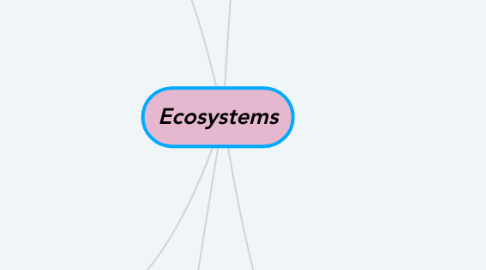Ecosystems
저자: Carly Horenfeldt


1. Abiotic factors and interactions
1.1. The term abiotic is the opposite of what biotic means. Abiotic means non-living elements.
1.2. Some examples of non-living elements are water, sand, rocks, the sun, buildings, paper...e.t.c.
1.3. A lot of the time, biotic elements interact with abiotic elements.
1.4. Water is an abiotic element. Every living organism needs water to survive. For example: dogs need water to drink, fish need water to live in, flowers need water to grow...e.t.c.
1.5. Humans are biotic. We use paper which is abiotic.
1.6. Ants are also biotic. Ants build there homes out of sand. Sand is an abiotic element.
1.7. Some birds build their nests on top of lights/lamps attached to buildings. BIrds are biotic. Lights are abiotic.
2. Human impact
2.1. At times, humans can be the most powerful weapons. A lot of the time, we harm living things without even noticing. For example: killing the small fly in your house is harmful and isn't good. Sometimes it is not what we do directly. It could be that we do something, and that something affects other living things. If you throw a plastic water bottle on the ground and said to yourself, oh, it's just one water bottle, everyone would think that, and then it would be more then just one water bottle. Humans waste about 38 billion plastic water bottles a year.
2.2. One thing we can do to not hurt animals as much is use re-usable water bottles so that not as many will be wasted.
2.3. We can also turn off the lights when we are not using them so that it doesn't waste as much electricity.
2.4. We can make sure not to litter. Littering is a big issue. There are so many livings organisms that get hurt because of our litter. We are the ones that choose to litter, so why do the animals have to get hurt.
2.5. It is the little things that count. If everyone starts to change some small things, our world will be a better, healthier place for all.
2.5.1. Some things we can do: don't litter, don't leave the lights on, don't leave the water running, try to not use cars as much...e.t.c.
3. Sustainability
3.1. The term sustainable means to do something over and over again without it having any affects.
3.2. Humans do things repeatedly. Some of the things we do can have a good affect and other things we do don't have a good affect.
3.3. One thing we do that is not good is, we use oil to make gas so that we can drive our cars. Oil is a resource that will eventually run out. If we over use it, it will eventually run out.
3.3.1. There are alternatives to this though. Instead of always using gas to power our cars, we can buy electric cars. Electric cars don't cause pollution and nothing will run out if we power our cars by electricity.
3.4. Burning coal is another example. Instead of burning coal for energy, we can use wind or electricity to provide us with energy. That would be sustainable because wind and electricity will never run out.
3.5. You can use solar power instead of using gas. gas isnt healthy for the environment.
4. Vocabulary
4.1. Photosynthesis: a process by which plants use water, carbon dioxide, and sunlight to produce sugars (food) Producer: Producers make their own food. Consumer:Consumers must eat other organisms to obtain energy. Herbivore:Herbivores eat plants Carnivore:Carnivores eat animals Scavenger:Scavengers eat dead animals Omnivore:Omnivores eat both plants and animals Detrivores:an organism that feeds on large parts of decaying plant and animal matter and on waste material Decomposers: an organism that consumes and breaks down dead organisms or waste matter into simple substances Food chain:Food chains start with a producer and end with a consumer. Food chains show the feeding patterns of organisms in an ecosystem. Food web: Food webs show how the food chains in an ecosystem are interconnected. A food web may contain several food chains. Pyramid of Numbers:A pyramid of numbers shows the total number of organisms at each level of a food chain or food web Closed system:A closed system is one in which no new matter can enter and no matter can leave. Cycle:cycle: a pattern in nature that repeats over time Sustainable:something that can be maintained and used indefinitely Evaporation:the process in which a substance changes state from liquid to gas Condensation:the change in state of a substance from gas to liquid Precipitation:water in the liquid or solid state that falls to Earth
5. Biotic factors and interactions
5.1. The term biotic means living organisms
5.1.1. Some examples of biotic elements are: humans, trees, birds, insects, grass...e.t.c
5.2. A bird and a worm are both living things. Birds eat worms a lot of the time. That is an example of how one biotic element can interact with another biotic element.
5.3. Bears are biotic as well. They eat fish and berries which are also biotic, to provide themselves with energy.
5.4. Squirrels are living. They live in trees and trees are also biotic.
5.5. Wolves are living. They eat bunnies which are also living, and bunnies eat grass which is living. Those are all biotic elements interacting.
5.5.1. That is also considered a food chain.
5.5.1.1. A food chain starts out with a producer and ends with a consumer. The starting main source of energy is the grass.

